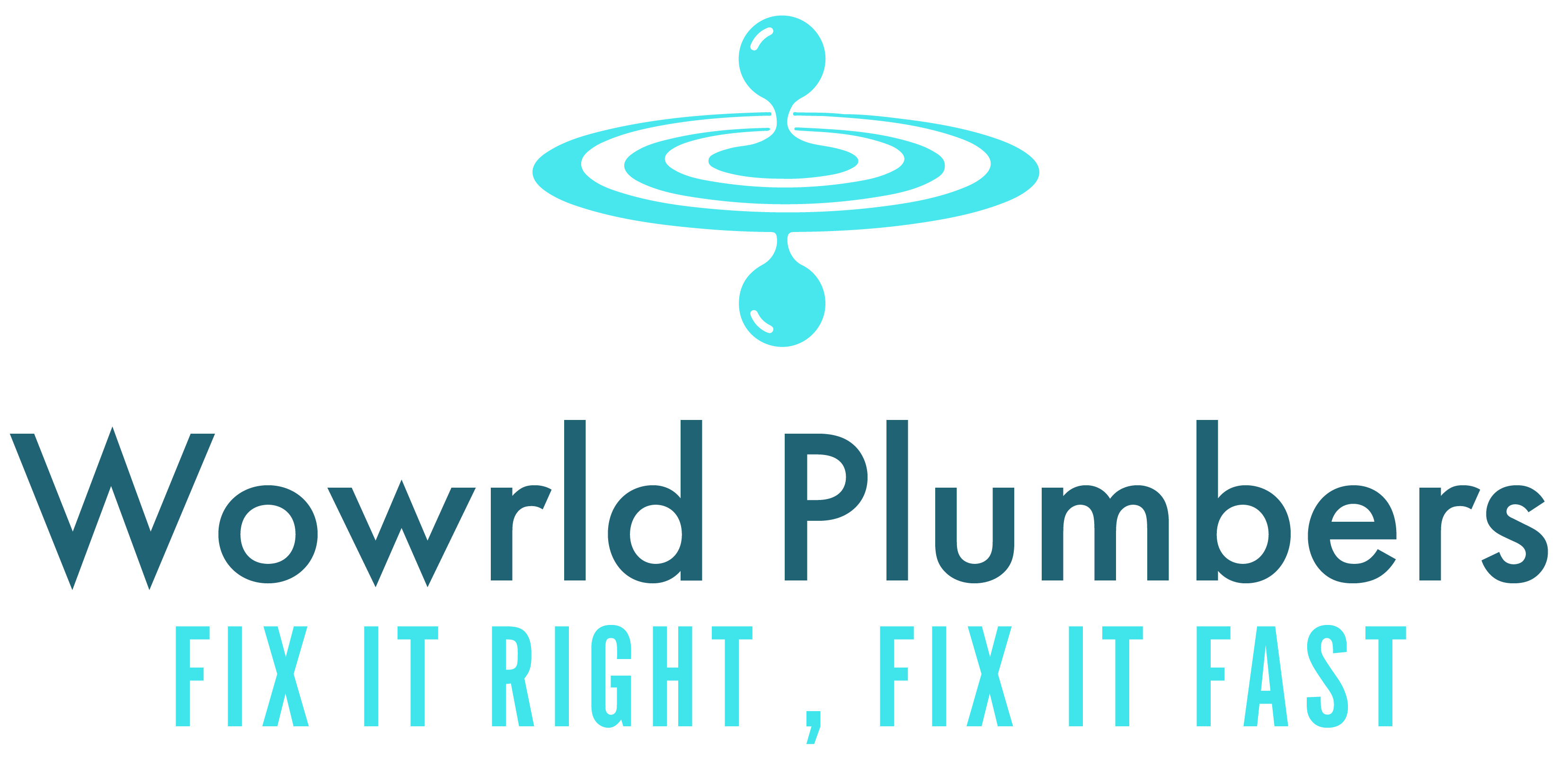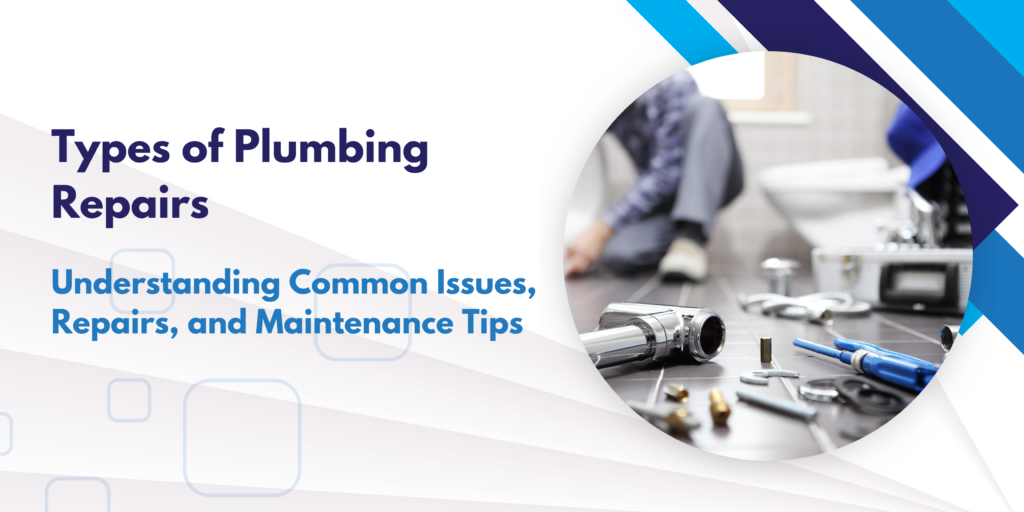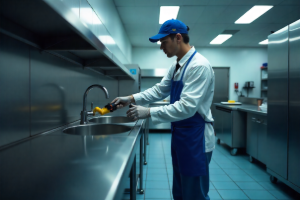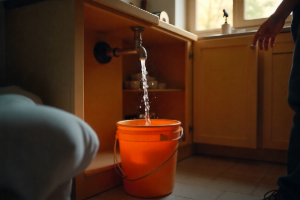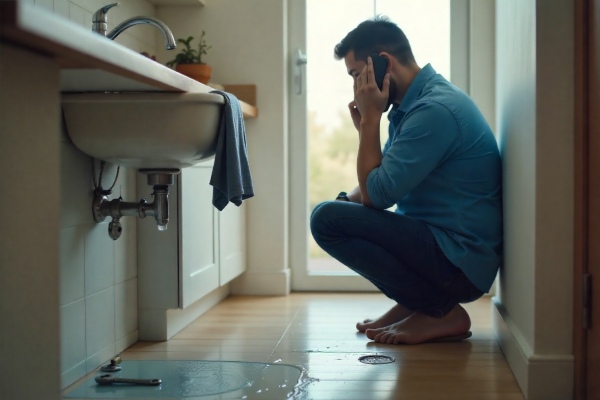Plumbing issues are an inevitable part of homeownership, and understanding the various types of plumbing repairs can help you deal with problems quickly and effectively. From broken pipes to clogged drains, plumbing repairs can vary widely. This guide will cover common plumbing repairs, the types of plumbing systems, and essential maintenance tips to keep your system in top shape.
Types of Plumbing Repairs
Plumbing repairs are necessary to keep your home running smoothly. Whether it’s a small leak or a major pipe replacement, knowing the types of plumbing repairs can help you understand the scope of each problem and what needs to be done.
Common Types of Plumbing Repairs Homeowners Face
Homeowners frequently face plumbing issues like:
- Leaky faucets: Caused by worn washers or seals.
- Clogged drains: Often caused by debris, grease, or hair buildup.
- Broken pipes: A serious issue that can lead to flooding.
- Toilet repairs: Includes fixing running toilets or replacing broken parts.
- Water heater problems: Issues like low water temperature or leaks.
- Sewer line problems: Can cause backup or unpleasant odors.
Do Plumbers Fix Broken Pipes? Here’s What You Need to Know
Yes, plumbers specialize in fixing broken pipes. Depending on the extent of the damage, a plumber will either repair the damaged section or replace the entire pipe. Broken pipes can lead to significant water damage, so it’s essential to address them quickly.
What Are the Different Types of Repairs in Plumbing?
Plumbing repairs can vary from simple fixes to more complex jobs. Some of the most common types include:
- Leak repairs: Fixing leaks in pipes, faucets, or fixtures.
- Pipe replacements: Replacing old or damaged pipes to prevent leaks and water damage.
- Water heater repairs: Fixing or replacing water heaters that aren’t working efficiently.
- Drain cleaning: Clearing clogs in sinks, bathtubs, or toilets.
Understanding Pipe Repairs: What They’re Called and How They’re Done
Pipe repairs are typically categorized by the type of damage:
- Patch repair: Used when only a small section of the pipe is damaged.
- Re-piping: A complete replacement of pipes when they are severely damaged or corroded.
- Slip lining: Involves inserting a new pipe inside the old one to reinforce it.
Common Plumbing Repairs
Some plumbing issues are more common than others. Recognizing the most frequent problems and their quick fixes can help you prevent further damage.
What Is the Most Common Plumbing Repair?
The most common plumbing repair is fixing leaks, particularly in faucets, showerheads, or pipes. Leaky faucets are often caused by worn-out washers, while pipe leaks can occur due to age or damage.
Top Plumbing Issues and Their Quick Fixes
- Clogged drains: Use a plunger or drain snake to clear minor clogs. For persistent blockages, consider using a chemical drain cleaner or contacting a plumber.
- Running toilet: Replace the flapper valve or adjust the float to stop the toilet from running.
- Low water pressure: Check for clogged aerators in faucets or sediment buildup in pipes. Cleaning or replacing these components often resolves the issue.
How to Address Frequent Plumbing Problems Effectively
To address plumbing issues effectively:
- Fix leaks promptly: A small leak can lead to significant water damage if left unchecked.
- Prevent clogs: Avoid putting grease, hair, or non-degradable items down drains. Use drain covers to prevent debris buildup.
- Schedule regular maintenance: Annual inspections and maintenance can help detect issues before they become costly problems.
Types of Plumbing Systems and Pipes
Understanding the types of plumbing systems and pipes used in your home is crucial for identifying potential issues and knowing what to expect during repairs.
What Are Three Types of Plumbing Systems?
There are three primary types of plumbing systems:
- Water supply system: Delivers clean water to your home.
- Drain-waste-vent (DWV) system: Removes wastewater and sewage.
- Gas supply system: Delivers natural gas for heating and cooking.
Types of Plumbing Pipes and Their Uses
Different pipes serve different functions in plumbing systems:
- Copper pipes: Durable and corrosion-resistant, commonly used for water supply lines.
- PVC pipes: Lightweight and inexpensive, often used for drainage and venting.
- PEX pipes: Flexible, easy to install, and used for both hot and cold water distribution.
- Galvanized steel pipes: Typically found in older homes, these are prone to corrosion and often need replacement.
What Is the Most Common Type of Plumbing?
The most common type of plumbing used today is PEX (cross-linked polyethylene) piping, due to its flexibility, durability, and ease of installation. It’s often used for both water supply and heating systems.
Plumbing Tools and Maintenance
Having the right tools and knowing how to maintain your plumbing system are essential for keeping your system in good working order.
What 5 Tools Are Most Common in Plumbing?
The five most common tools used by plumbers include:
- Pipe wrenches: Used to tighten or loosen pipes.
- Plunger: Essential for clearing blockages in toilets and sinks.
- Pipe cutter: Used to cut pipes to the desired length.
- Drain snake: Helps remove deep clogs in pipes.
- Adjustable spanner: A versatile tool for tightening nuts and bolts.
Plumbing Maintenance: Tips for a Long-Lasting System
To keep your plumbing system running smoothly:
- Inspect pipes regularly for signs of leaks or corrosion.
- Clean drains regularly to prevent clogs.
- Check water pressure to ensure it’s not too high, which can damage pipes.
- Flush the water heater yearly to prevent sediment buildup.
What Is a Fixing in Plumbing? Explained
In plumbing, a fixing refers to any device or attachment that is used to secure or support pipes, fixtures, and other plumbing components. This can include brackets, hangers, and supports that keep pipes in place.
Specialized Plumbing Repairs and Terminology
There are many specialized terms in plumbing, and understanding them can help you better communicate with your plumber and handle specific issues.
What Does ‘Repair’ Mean in Plumbing?
In plumbing, repair refers to the process of fixing damaged or malfunctioning components of a plumbing system, such as pipes, faucets, or water heaters. Repairs can range from simple fixes like tightening a joint to more complex tasks like re-piping a home.
Pipe Repair Techniques and Their Names
Common pipe repair techniques include:
- Patch repair: For small leaks or cracks.
- Re-piping: Replacing old or damaged pipes entirely.
- Slip lining: Inserting a smaller pipe into a damaged pipe to reinforce it.
The Importance of Regular Plumbing Maintenance
Regular plumbing maintenance is key to preventing major issues. Routine inspections can help detect problems early, saving you money on emergency repairs. Simple maintenance tasks, such as cleaning drains and checking for leaks, can extend the life of your plumbing system and prevent costly repairs.
Got a Plumbing Issue? Let the Experts Handle It – Contact Woworld Plumbers Today!
Understanding the types of plumbing repairs, common issues, and essential maintenance tips is crucial for keeping your plumbing system in top shape. Whether you’re facing a leaky faucet, a clogged drain, or a broken pipe, knowing how to address the problem quickly and effectively can save you time and money. Regular plumbing maintenance can also help prevent bigger issues down the road.
